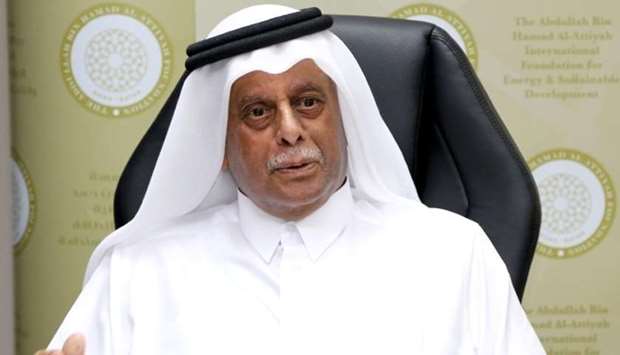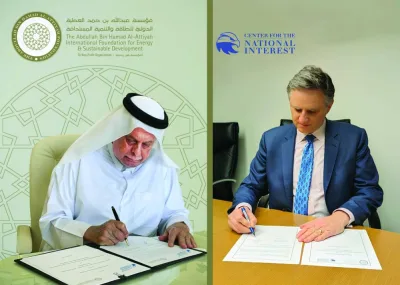HE the former Deputy Prime Minister Abdullah bin Hamad al-Attiyah is in “full support” of the Opec decision to extend oil output cuts by nine months up to March 2018.
“This is how we can cool down the market…we have no other choice,” al-Attiyah told Gulf Times.
He termed as “unfortunate” the “competition between oil and oil” (shale and conventional) and said prices were generally determined by this.
Al-Attiyah pointed out since Opec adopted the resolution (on extension of oil output cuts) the market was in a more “controlled” situation.
“All of the producers have agreed to it…even small producers have supported the agreement,” the oil industry veteran and former Opec president said.
“If you ask me, this is the only solution (before the Opec) now,” al-Attiyah said and added that he expected the price to hover around $50 a barrel in the remaining period of this year and in 2018.
Meanwhile, Opec decided yesterday to extend cuts in oil output by nine months to March 2018, as the producer group battles a global glut of crude after seeing prices halve and revenues drop sharply in the past three years.
The cuts are likely to be shared again by a dozen non-members led by top oil producer Russia, which reduced output in tandem with the Organisation of the Petroleum Exporting Countries from January.
Opec's cuts have helped to push oil back above $50 a barrel this year, giving a fiscal boost to producers, many of which rely heavily on energy revenues and have had to burn through foreign-currency reserves to plug holes in their budgets.
The price rise this year has spurred growth in the US shale industry, which is not participating in the output deal, thus slowing the market's rebalancing with global crude stocks still near record highs.
On whether Opec and non-Opec countries will be able to achieve their goal, BMI Research said, “From a fundamental perspective keeping the agreement going will ensure greater market tightness over the next nine months. In order to achieve the target of reducing OECD stocks to their five-year average over the extended nine-month period, drawdowns would have to average 25.6mn barrels a month (including Q2, 2017).
“We view this as achievable, given the expected demand growth over the coming quarters. Opec production caps over Q2, 2017 and Q3, 2017 will also have a greater impact on global supply as domestic demand for oil seasonally rises over the summer period in Gulf Cooperation Council (GCC) countries.”
BMi said, “Looking ahead, the big question that will loom larger as we move closer to the end of the proposed extension period is what happens when the coordinated production achieves its aim of draining global stockpiles. A managed re-entry seems the most logical solution as opposed to a laissez-faire approach, which would risk flooding the market with over 1.0mn b/d of crude. Whichever option OPEC takes to deal with this issue, it is likely that the market will have to find a way to absorb the returning barrels in 2018, at the same time as non-OPEC supply continues to grow from areas such as the North Sea, Brazil and the US. This in turn is likely to add downside pressure to prices in 2018.”




